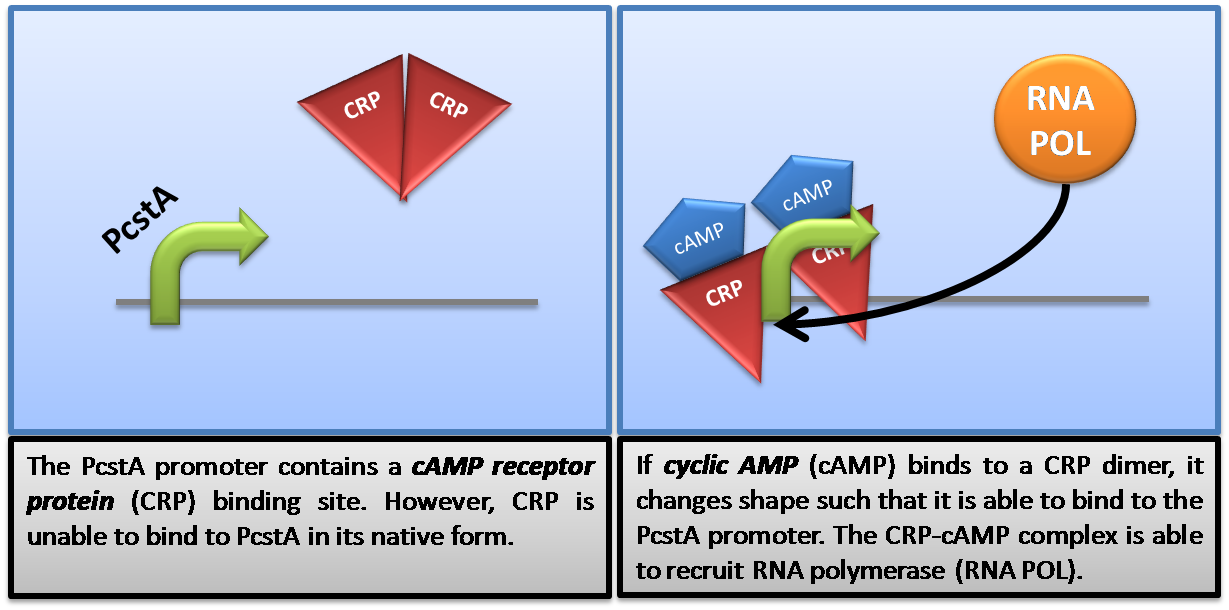Team:Imperial College London/M2
From 2009.igem.org
JamesField (Talk | contribs) (→Acid Resistance:) |
JamesField (Talk | contribs) (→Acid Resistance:) |
||
| Line 28: | Line 28: | ||
By 'hacking' E.coli’s endogenous acid resistance pathways in three places we induced the formation of a safe colanic acid microcapsule that protects our chassis from the harsh acidic conditions of the stomach. | By 'hacking' E.coli’s endogenous acid resistance pathways in three places we induced the formation of a safe colanic acid microcapsule that protects our chassis from the harsh acidic conditions of the stomach. | ||
| - | |||
| - | |||
| - | |||
<b>The Encapsulation Triple Hack:</b> | <b>The Encapsulation Triple Hack:</b> | ||
[[Image:TripleHack.png|700px|centre]] | [[Image:TripleHack.png|700px|centre]] | ||
| - | |||
| - | |||
| - | |||
| - | |||
| - | |||
| - | |||
| - | |||
Revision as of 11:45, 17 October 2009

Contents |
 Module 2 - Encapsulsation
Module 2 - Encapsulsation
Overview
Encapsulation (Module 2) allows the safe passage of polypetides through the stomach into the intestine. Without encapsulation, our polypeptides would be denatured and degraded by stomach acid and digestive proteases respectively.
Initiation:
Module 2 is triggered by a rise in levels of intracellular cyclic AMP (cAMP). This is becuase cAMP facilitates the dimerisation of the transcription factor CRP which induces transcription from the PcstA promoter. The rise in cAMP is correlated with a fall in levels of the primary carbon source (glucose). Thus, by controlling the initial amount of glucose present in the system, we achieve a timer function for the start of Module 2.
Acid Resistance:
By 'hacking' E.coli’s endogenous acid resistance pathways in three places we induced the formation of a safe colanic acid microcapsule that protects our chassis from the harsh acidic conditions of the stomach.
The Encapsulation Triple Hack:
Polypeptide Release:
Once The E.ncapsulator reaches the intestine, gut microflora will digest the colanic acid coat, resulting in the release of the polypeptide therapeutic. Colanic acid represents a rich sugar source and many gut bacteria such as Citrobacter have been found to contain the necessary enzymes to break it down. In addition, a number of phages have a similar enzyme attached to their tail fibers which allows them to break into colanic acid coated cells.
Module 2 Freeze Drying:
In addition, Module 2 involves the synthesis of the preservative trehalose. This is a disaccharide that allows us to freeze dry the chassis without damaging either its structural integrity or the intracellular polypeptides. OtsA and OtsB are the two genes required for trehalose production. We hope that by introducing additional copies of these genes on a plasmid we can boost trehalose production. Freeze drying is an important storage mechanism that will facilitate the widespread dispersal of E.ncapsulator technology.
Module 2 End:
The end of Module 2 occurs when the temperature of the culture is raised to 42 degrees centigrade. This temperature shift triggers Module 3 in which the genome is deleted.
Project Tour


 "
"











